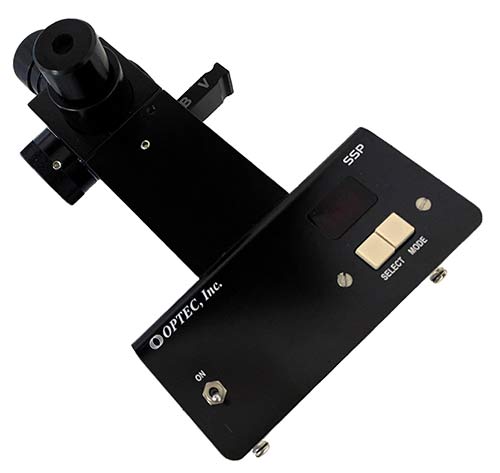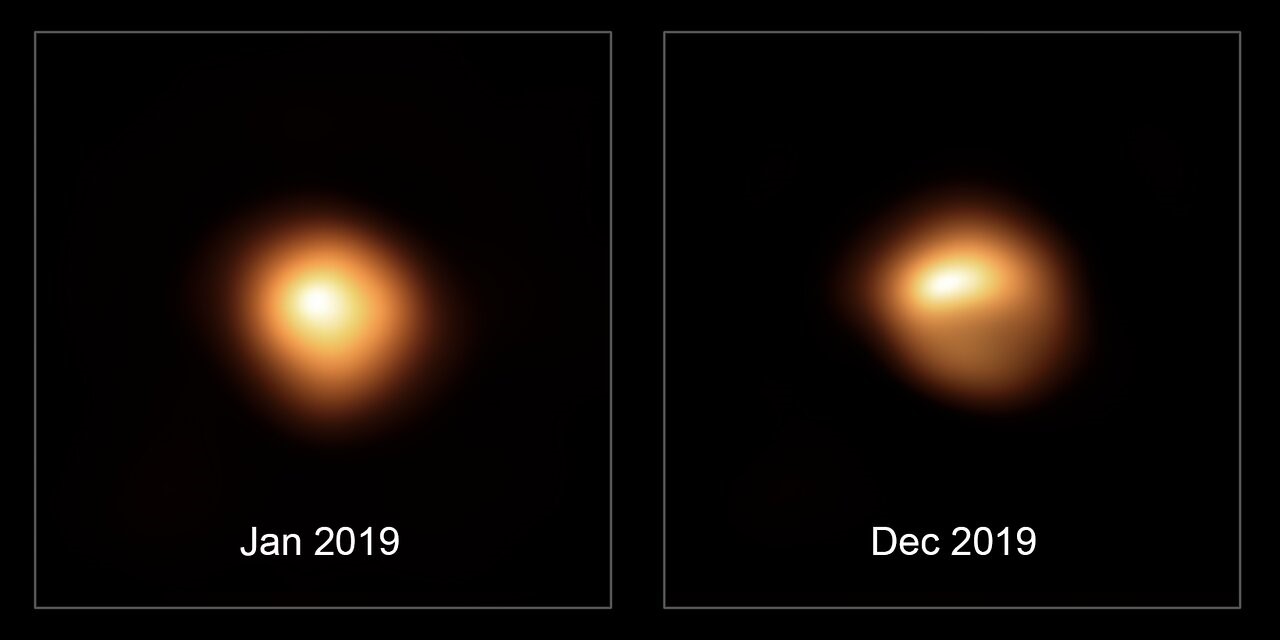Page 2


Photoelectric Photometry and the Curious Case of Betelgeuse
By Don W. Carona
Using a photometer is an absolute pleasure to me. There's something about the poetry of it coupled with the constant work at the telescope. Once I get everything ready for the observing run for the night, I start a little starry music on my phone, climb the ladder to the telescope and off I go for the next several hours. There are very few breaks in the action and I fall into a machine-like rhythm while the rest of the world disappears. There's nothing quite like it, but it is work and probably not for everyone. My love of the photometer may date back to the era before digital cameras when all photometric work was done with a photometer. Good memories.
Today's astronomical cameras have mostly removed the need for photoelectric photometers. They are more sensitive; can measure multiple stars in the same field; and today's telescope control systems can do almost all of the observing work for you. Still, there are some targets that cameras have difficulty dealing with for accurate measurements . . . bright stars.
The problem with bright stars, especially red stars, are the complications in measuring their magnitude.
Cameras and photomultiplier tubes are too sensitive without masking off the vast majority of the telescope aperture, which then creates other problems. Exposure times, called integration or deflection times for photometers, are typically too short to get around atmospheric scintillation problems. It can also be difficult to find a suitable comparison star near the variable a.k.a.(program) star. Comparison stars should be about the same brightness and color as the variable if you want an accurate measurement.
However, there is one instrument that can handle any bright star you throw at it without masking off the aperture: the Optec SSP-3 photometer. The SSP-3 uses a photodiode instead of a photomultiplier tube, which makes it far less sensitive to voltage problems and far more robust, with respect to handling, than its counterpart. The Observatory owns two SSP-3's and one SSP-5 (photomultiplier tube). To give you a general idea of the difference, the SSP-3 can take a 10 second integration of a 1st magnitude star through a 14" telescope without complication. The SSP-5 can't take a 1 second integration through a 4" refractor without hitting the high voltage cutoff.
When Betelgeuse began its unprecedented fading in late 2019, my interest in a photometry project was peaked. I knew the one instrument that could handle the job was sitting in its case in my office. Astronomers Edward Guinan and Richard Wasatonic (Villanova University) first noticed the strange trend developing in the variability of the red supergiant. Guinan has studied Betelgeuse for more than 25 years and by the start of December, it was clear that the rate of the dimming would prove to be extraordinary.

Optec SSP-3 Photometer
I dug out the newest of the two SSP-3 photometers and began observing standard red/blue star pairs to measure the transformation coefficients in the photometric Johnson B and V filters. After a week of measuring the transformations, which are critical in the conversion of instrumental magnitudes to the standard system, I was ready to start working on Betelgeuse. From late December 2019 to late April 2020, I spent every observable night measuring the red giant with Guinan and Wasatonic. I made the last reliable measurement of the season on April 27.6 2020 UT (V = +0.398) and, due to weather in Villanova, the magnitude at minimum: V = +1.63 on Feb 09.14 with the mean minimum measurement of V = +1.61 between 07-13 February 2020.
So, what caused the unprecedented fading of Betelgeuse? The answer to that isn't straight-forward, but according to Guinan, the coincidence of a normal 5.9-year light-cycle minimum and a deeper-than-normal 425-day period are the driving factors. The best clue came from the European Southern Observatory's Very Large Telescope that directly imaged the supergiant using the SPHERE instrument. The amazing images suggest the fading is most likely due to giant starspots. The surface deformation is clearly visible.

ESO Paranal Observatory; SPHERE
There are a number of published articles that can be found via web search if you're interested in reading about the different studies and theories of the causes of the fading. Whatever the cause, it is one of the most spectacular stellar displays we've had the privilege of witnessing. There are a lot of flare stars and other unusual stars that are fun and interesting to observe, but when one of the brightest stars in the night sky puts on an unpredictable show, it's humbling. The best part of this...the show may not be over.
When Betelgeuse began to brighten again in mid-February, we realized that it was brightening at an accelerated rate much like its rapid fading. Guinan and Wasatonic ran trending curves on all of the data gathered on the project from multiple sources and found that it could experience an unusual brightening event by reaching as bright as ~ 0.0 mag in July. It had already surpassed its typical peak magnitude and was brightening at rather quick pace and then the completely unexpected occurred.
On July 28th, A. Dupree et al. reported in the Astronomer's Telegram (ATel #13901) that the STEREO mission was able to measure Betelgeuse and what they reported is curious indeed. It's getting fainter again instead of brighter! The team reports the following V magnitudes: 2020 June 24.12 UT, V= 0.66 +/-0.015; 2020 July 13.87 UT, V=0.76 +/-0.015; 2020 July 20.54 UT, V=0.80+/-0.015. I was completely taken by surprise when the flash from the ATel arrived in my inbox.
Once again, Betelgeuse is proving to be more unpredictable than imagined. What's it going to do next?
I have no idea, but I can't wait to find out. The next minimum on the 425-day cycle should occur sometime in April 2021, but the observing season starts just around the corner in late September. If you are interested in photometry, this is a great target for getting started, but you really don't need to collect data to enjoy observing Betelgeuse. It's beautiful in binoculars or through an eyepiece and you can get really good using your eyes to estimate, and report if you like, its magnitude.
A Very Brief Look at Photometry
The topic of photometry is a bit complicated for a short article, but a little insight may be appropriate. It should be mentioned first that it doesn't matter if you're using a camera or a photometer. Once you have the data, the method to get to a result is the same. The easiest method is differential photometry. This is where you compare the brightness of a variable star to that of other stars of known magnitudes. The magnitudes you are comparing are instrumental, which means the magnitude of an object as determined by the instrumental system used to obtain the measurements.
Instrumental magnitudes are calculated using the formula:
m = -2.5 * log10(flux1 / flux2)
- flux1 is the sky subtracted counts per second of the variable
- flux2 is the sky subtracted counts per second of the comparison
It's a great method for developing a light curve that shows the change in brightness over time. This is my preferred method for observing extra-solar transits to measure the transit depth. In order to determine the standard magnitude of a star, differential photometry won't get you there by itself.
Let's say that we are interested determining the V band magnitude of a star. In this case, we will use the Johnson B and V photometric filters to achieve the goal.
The formula used to transform an instrumental magnitude to the standard system is:
V = v - Kv X + εv(b-v) + ζv
where:
- V is the standard magnitude
- v is the instrumental magnitude
- K is the extinction coefficient for the observation night
- X is the airmass
- ε is the transformation coefficient
- b-v is the instrumental color term
- ζ is the zero-point for the observing night
The transformation coefficients in each filter must be determined independently by measuring a standard red/blue pair of stars over several nights. The same can be achieved by observing a standard cluster near zenith. The transformation coefficients remain good for up to a year as long as nothing about the system changes. So, if you think your optics need to be cleaned, do it before you determine the transformations. Otherwise you'll be doing it again.
The atmospheric extinction coefficient (K), which is the measure of how the atmosphere is absorbing light, and the zero-point (ζ), the measure of the magnitude of an object that produces 1 count per second on the detector, must be determine each night you observe the target. This is typically done by observing a series of standard stars of various colors over a wide airmass range. However, if the variable and comparison stars are close enough to one another, the extinction, and by extension the zero-point, can be determined if the pair are followed over a wide airmass range.
A weird sidebar about the extinction coefficient during the fading of Betelgeuse. Due to the current pandemic, the extinction fell dramatically during the first month of public isolation. This was due to greatly diminished auto and air traffic. In short, the atmosphere cleared up to a near pre-industrial level.
This is now getting into more complicated territory and probably worth discussing in a different forum. It's important to know that anyone can do photometry and do it well. If you want some more information about the process, there's a great article written by Barry Adams, "Data Reduction Techniques for Differential Photometry" . It's written for photoelectric photometry, but is just as applicable for the astronomical camera. A web search for "CCD Photometry" will get you a number of good results including the AAVSO guide, which covers the broad topics, but is a little thin in details. As always, I'm happy to answer questions.
About the Author

Don Carona
Physics Observatory Manager
Texas A&M University Dept of Physics and Astronomy
Website: http://doncarona.tamu.edu